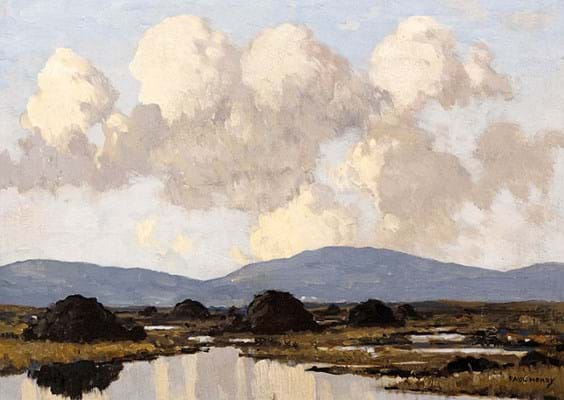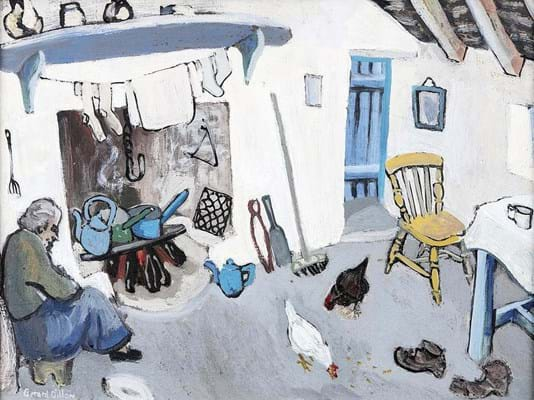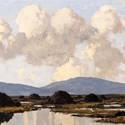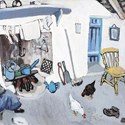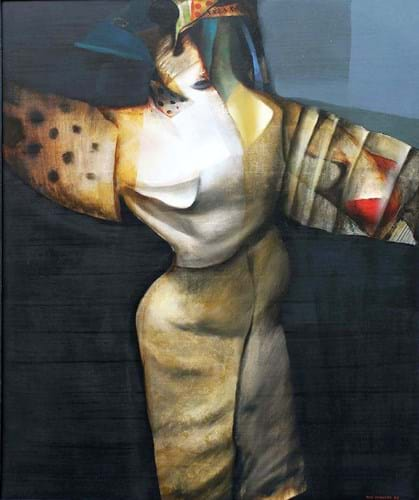Between the Dublin auction houses of Whyte’s, Adam’s (both 20% buyer’s premium) and de Veres (19.5% buyer’s premium), €1.8m worth of 19th and 20th century pictures and sculpture sold from just over 530 lots, much of which was absorbed.
This was below the more buoyant series in May by some €800,000, but was boosted by the £3.12m that changed hands in London the same week at Sotheby’s Irish and Yeats sales.
Ian Whyte, managing director of Whyte’s, said while buyers have become more discerning, a lack of top art coming on the market to meet that demand is a problem.
“The trouble is there isn’t much of the best art out there at the moment to go around,” he said. “Most top pictures coming on the market are from deceased estates. People who do have them are holding on to them because the interest rates in the banks are so low, and forced sales are few now that Ireland is through the recession.”
But Whyte is hopeful more pictures will begin to trickle through as Ireland returns to the prosperity it had previously.
Whyte’s
Traditional landscapes from the late 18th and early 19th centuries are a sticky area for the Irish art market, with fewer collectors drawn to the field. But an exception to the rule is the mighty Paul Henry (1876-1958), one of Ireland’s most sought-after landscapists both domestically and abroad.
Demand for Henry’s canvases of the west of Ireland, notably capturing the wildness of Connemara, has remained consistently high throughout the peaks and troughs of the market.
Leading the sale was West of Ireland Bog, a market-fresh and decent-sized 14 x 20in (36 x 51cm) oil on canvas of Connemara.
Featuring plenty of sky painted with typical heavy impasto clouds, hazy blue mountains and turf stacks, it drew solid interest, selling to an Irish collector at a mid-estimate €100,000 (£88,500) – the second highest price for the artist this year.
Another painter with international appeal is Jack Butler Yeats (1871-1957), whose Expressionist-style canvases of bright colours and free brushstrokes command a strong following.
Despite half a dozen major Yeats oils being offered at Sotheby’s a week before in London (see story also in Art Market this edition), Whyte’s found plenty of interest for Against the Stream, a 9 x 14in (23 x 36cm) oil on panel from 1945.
Depicting a man walking along the river bank pulling a small boat, it was secured by a private collector in Ireland for €92,000 (£81,420) against a €60,000-80,000 estimate. This is a strong return for the vendor who had acquired it in the same rooms in December 2012 for €53,000.
Another confidence-boosting performance came in the form of a bright figurative work by the landscapist Maurice Canning Wilks (1910-80). Men of the West, a signed 19½in x 2ft 1in (50 x 64cm) oil on canvas, sold to a collector in London for more than double its guide at €17,000 (£15,050).
Adam’s
The idiosyncratic canvases depicting rural life on the west coast of Ireland by the Belfast painter Gerard Dillon (1916-71) have long held a premium in the artist’s oeuvre.
Indeed, his auction record, set at £160,000 at Sotheby’s in May 2007, was fetched for a self-portrait of the artist standing in a cottage on his beloved Connemara.
Cottage Interior, a 12 x 16in (31 x 41cm) oil on canvas offered at Adam’s on September 27, depicts another Connemara cottage, sparsely furnished with an elderly figure, known as a ‘creepy’, in the corner. The work, which is thought to date from c.1950s, tickled the taste buds of several collectors and was pursued to €46,000 (£40,000), comfortably above a €25,000- 35,000 guide.
Keen bidding also greeted another, later canvas by Dillon called The Artist in the Country, a mysterious self-portrait of the artist as a masked Pierrot in the act of painting. The artist adopted this motif later in his career while battling depression.
The painting was part of a large consignment of art from the corporate art collection of UTV, a Northern Ireland television company. It nearly doubled the top guide to sell for €39,000 (£34,520).
Just as at Whyte’s, the top-seller on the day was a Paul Henry landscape titled A Connemara Cottage, dating to c.1925-30. It was marginally smaller than the Whyte’s example but had an equally strong provenance, having resided in the same family since 1931.
It tipped over top estimate to sell for €87,000 (£77,000).
De Veres
A 1984 canvas by John Shinnors (b.1950) was the financial star of de Veres’ Irish art sale on September 20.
The 2ft 9in x 2ft 3in (84 x 69cm) oil on board depicts a scarecrow (a favourite motif of the artist), executed in Shinnors’ typical combined figurative and abstract style, and coloured geometric shapes. It was pursued to €14,500 (£12,830) against a €6000-9000 estimate.
But the potential top lot of the sale, a well-known oil by Gerard Dillon titled A Wet Day, failed to find a buyer estimated at a modest €20,000-30,000.
This was the picture’s third appearance at auction in a decade. Since it sold at Adam’s in 2006 during the height of the Irish art boom for €77,000, it has more than halved in value.
Selling well among the more traditional paintings was A Muted Appeal (The Little Match Girl) by Richard Thomas Moynan (1850- 1906). The oil on canvas, dated 1895, depicts a girl sitting in a Georgian doorway in Dublin selling matches.
The model for this painting was a street vendor who appeared in other paintings by the artist.
It was painted in the artist’s studio in Harold’s Cross in 1895, and exhibited in the RHA in March of the same year with a substantial price tag of £50. Estimated in the sale at €6000-9000, it sold for €10,500 (£9290).
£1 - €1.13


